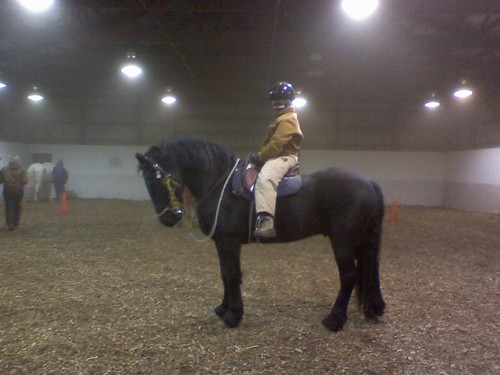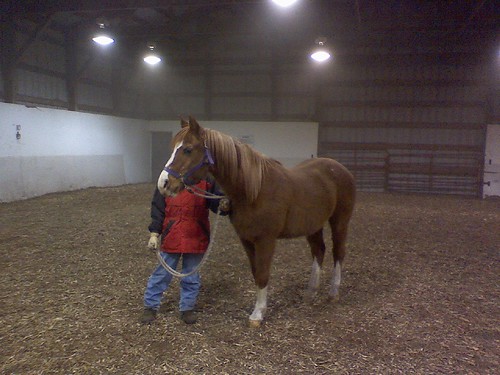What happens during the winter at We Can Ride?
 Did you ever wonder what happens between October and April while you're not volunteering, riding, or driving for We Can Ride? What do those horses do all winter? Don't they get bored? I'll let you in on a little secret, while you're taking a much deserved winter break, the We Can Ride horses are hard at work. Sure they have some time off right after classes are over, everyone deserves a break! But it's not long before they're back to work.
Did you ever wonder what happens between October and April while you're not volunteering, riding, or driving for We Can Ride? What do those horses do all winter? Don't they get bored? I'll let you in on a little secret, while you're taking a much deserved winter break, the We Can Ride horses are hard at work. Sure they have some time off right after classes are over, everyone deserves a break! But it's not long before they're back to work.Some of the horses at Minnetonka get to help the residents learn horsemanship skills and riding. They even help residents learn to be good leaders for the Spring, Summer, and Fall sessions. Then in January, a few brave souls travel to the barn to help remind the horses what We Can Ride is all about. Most evenings you can't even recognized the volunteers because they are so bundled up with clothing to keep warm, you can't see their faces!
 Some horses need exercise so they get lead, ridden, and lunged. Some horses need refresher courses and how to be polite in the mounting block and how to prepare for a client. Sometimes new horses arrive and they need to start training to become the best therapy horse they can be. A new horse has his work cut out for him. New things like balls, hula hoops, barrels, and poles can be a bit scary when you're a new therapy horse. So volunteers help the new horses learn that toys are fun and can help their clients during riding and driving classes. Corey is new this year and is probably going to work at the U of MN. For now he's at Minnetonka and learning all the ins and outs about being a therapy horse. His favorite thing to do is roll in the dirt when his lessons are over.
Some horses need exercise so they get lead, ridden, and lunged. Some horses need refresher courses and how to be polite in the mounting block and how to prepare for a client. Sometimes new horses arrive and they need to start training to become the best therapy horse they can be. A new horse has his work cut out for him. New things like balls, hula hoops, barrels, and poles can be a bit scary when you're a new therapy horse. So volunteers help the new horses learn that toys are fun and can help their clients during riding and driving classes. Corey is new this year and is probably going to work at the U of MN. For now he's at Minnetonka and learning all the ins and outs about being a therapy horse. His favorite thing to do is roll in the dirt when his lessons are over.There's a few lucky horses that even get to help teach volunteers all sorts of new things: how to become a great leader, what the different parts are on a horse, how to tell if a horse isn't feeling very good, how to find the right saddle for the horse, or even how to find the right horse for each client.





